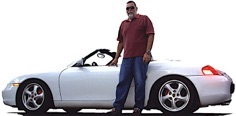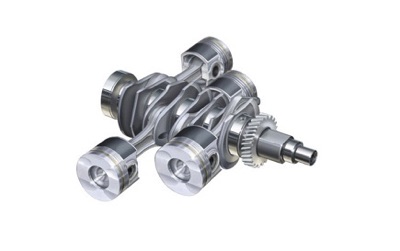

Published in the November 2015 issue of “Die Porsche Kassette”
Whether the auto makers admit it or not, they have all been forced to force it!
Forced air induction (turbocharging) is now being (tacitly) forced on all automobile manufacturers, Porsche included.There is no doubt that internal combustion engines have become much more efficient year-after-year and decade-after-decade, burning much less fuel per miles travelled, producing more power and torque, and emitting less carbon dioxide, and that’s a good thing.
It’s the natural progression of things with technical development and sensible regulation and enforcement.
But under the PC “saving the environment” umbrella, governments are requiring car makers to burn much less fuel in their engines so they can meet the ever more stringent and sometimes arbitrary MPG requirements year after year. As we’ve said before, it’s a game they play and have been playing for some time now and that’s not a good thing. Let me explain ...
The only way to emit less carbon dioxide is to burn less fuel, period.
The stoichiometric point, the ideal ratio of air and gasoline in an internal combustion engine, requires 14.7 grams of air to completely burn 1 gram of gasoline. It's the job of your car's computer (DME) to measure the amount of air the engine inhales via the Mass Airflow Sensor (MAF) and then provide precisely the correct amount of fuel at the stoichiometric ratio of 14.7 - to - 1.
Car makers know that government fuel-economy tests, especially those outside the USA, approximate the driving style of a heavily sedated octogenarian great-grandmother. Since the engine is rarely taxed, the turbo doesn't spool up, so no extra fuel is used and the MPG numbers get to meet or best the environmental regulations. But purposely driving slowly enough to keep the turbo from generating boost defeats the point of having a turbocharger in the first place. Sadly, out in the real world, riding that big wave of boosted midrange torque means burning extra fuel - and creating even more CO2. So much for reducing emissions.
Like I said, it’s a game!
So, the inevitable worst case scenario has happened for real Porsche lovers and enthusiasts.
Dr. Wolfgang Hatz, Porsche’s head of R&D, has repeatedly stated in several interviews with television and car magazines that both, the Boxster and the Cayman for model year 2016 will have turbo-charged flat-4 engines instead of the normally aspirated flat-6 power plants they’ve had since their inception. Furthermore, Dr. Hatz has refused to comment if upscaled version of the two models would retain the naturally aspirated flat-6.
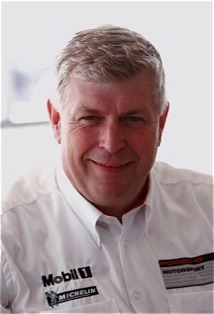
Dr. Wolfgand Hatz
The last time Porsche offered a four-cylinder turbocharged engine in one of their sports car was over 20 years ago in the 1989 944 (951) Turbo S and the 1994 968 Turbo S.
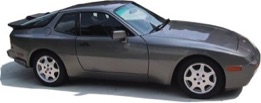
1989 944 Turbo S
There have been many optimistic rumors about keeping both power plants, but the way we see it, offering several turbo flat-4s and several normally aspirated flat-6 engines on entry-level models isn’t efficient enough in terms of costs, which is why the forced-fed flat-4 may eventually be offered as an exclusive engine option throughout the majority of the Porsche sports car line.
Flat-4 pistons and crank
The new engines will feature turbochargers and direct injection, and will produce impressive power figures for their size. Horsepower reportedly ranges from 210 HP for a 1.6-liter, to 286 HP for a 2.0-liter, with the range topped-off by a 360 HP 2.5L engine. The 2.0L and 2.5L will produce 295 lb-ft and 347 lb-ft of torque, respectively. The 2016 Boxster and Cayman will be the first models to use the new 2.0L and 2.5L flat-4 engines.
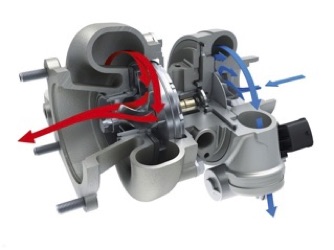
Turbocharger
These numbers look good, but I’m pretty bummed about the whole thing.
In my book “there’s no replacement for displacement”.
A good friend of mine from Toronto likes to say that there’s no better sound to listen to while driving your Porsche than the “symphony in flat-6” that your car performs and you get to be the conductor of the symphony!
I wholeheartedly agree with him. I’t sure isn’t going to be the same intoxicating music with a little flat-4 and its turbo waste gates popping off. Have you been to a Formula1 race recently? My point exactly!
This would be the perfect time to visit your Porsche dealer and snatch one the last 2015 Boxsters and/or Caymans which still sport the flat-6 engine.
Maybe they’ll start to appreciate in value, just like the 993 and all of the other “real Porsches”!
Who knew?
For more information on flat-4 engines and more, please visit my website:
www PedrosGarage.com.
Happy Porsche’ing,
Ⓒ2015 Technolab / PedrosGarage.com

